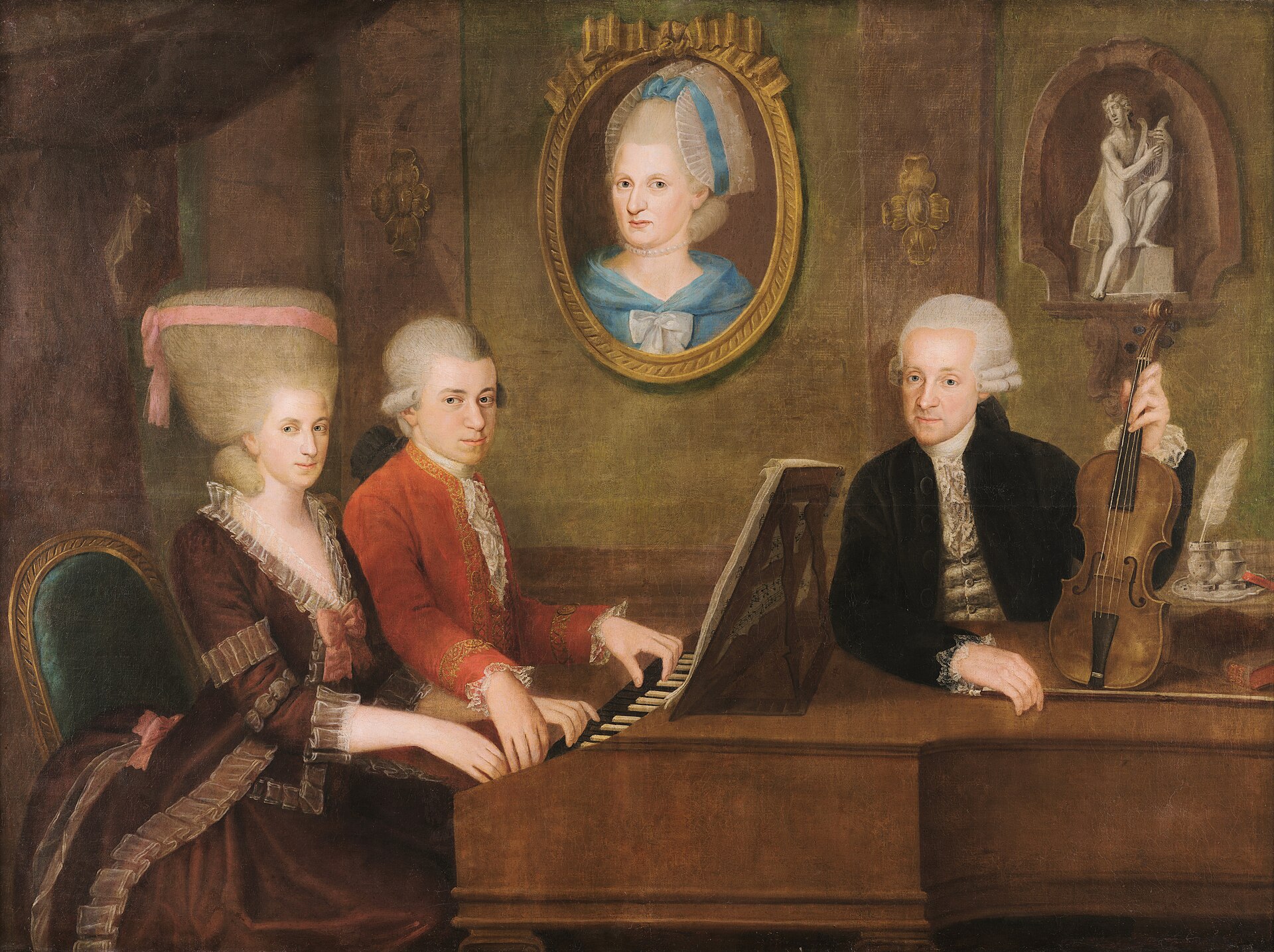
In celebration of the recently unearthed composition, Serenade in C, discovered by the Leipzig Municipal Libraries network, here are five little-known facts about Wolfgang Amadeus Mozart.
1. Mozart’s Fantasia in D minor, K. 397 was unfinished at the time of his death.
Like the Serenade in C, this piece was left undiscovered until after Mozart passed away. While nearly complete when discovered, the final ten measures of this work were likely completed by August Eberhard Müller. Alternative endings, such as a fugue, a repeat of the introduction, and more have been proposed. Compare the alternate ending performed by Mitsuko Uchida to the written ending in the following recordings:
2. Mozart and Clementi competed in an improvisation duel.
Like many other famous composers in the 18th century, Mozart was known to improvise during performances. He competed against Muzio Clementi in Vienna for Emperor Joseph II to see who was the greatest improviser. The duel was declared a tie. For more information on improvisation competitions between famous composers, please see page 3 of the Autumn 2024 Issue of Piano Inspires Kids. (link to kids.pianoinspires.com/magazine)

3. Mozart spoke several different languages.
Often touted as being able to speak fifteen different languages, Mozart was only known to speak German, Italian, and French fluently. Of his complete, incomplete, and collaborative operas, nine were in German, fourteen were in Italian, and one was in Latin.
4. Mozart composed a piece for the glass armonica.
The glass armonica, invented by Benjamin Franklin in 1761, is an instrument made of glass bowls blown to specific sizes and thicknesses to produce pitches. In order to play the instrument, the performer begins by dampening the exterior of the glasses, then pressing a foot pedal to spin the bowls, and lastly, applying light finger pressure to produce sound. Mozart composed the Adagio for Glass Armonica, K. 356 in May of 1791, just months before his passing.
5. His baptized name was not “Wolfgang Amadeus Mozart.”
Mozart’s baptized name was Johannes Chrysostomus Wolfgangus Theophilus Mozart. Born Catholic and baptized on January 27, 1756, “Johannes Chrysostomus” refers to his saint name, and Wolfgang is the Germanic version of “Wolfgangus.” Interestingly, the German translation for “Theophilus” is “Gottlieb,” but Mozart often signed his name with the French and Italian versions of the name, “Amadé” and “Amadeo,” respectively. He is now most commonly referred to with the latin spelling of his middle name; “Wolfgang Amadeus Mozart.”
MORE ON MOZART
- MICROCOURSE: Classical Sonatinas and Sonatas at the Piano
- PIANO MAGAZINE ARTICLE: Teaching Students to Love Classical Period Repertoire: Q&A with Suzanne Newcomb
- PIANO MAGAZINE ARTICLE: What Is the First Mozart or Haydn Piece You Teach? What Does the Student Need to Know Before Beginning to Learn It? by Martha Appleby, Patricia Banks, and Marsha Hollingsworth
- VIDEO: Mozart: Fantasie in D Minor, K.397 by Sean Schulze
- DISCOVERY PAGE: This Week in Piano History: The Birth of Muzio Clementi | January 23, 1752 by Curtis Pavey
- DISCOVERY PAGE: This Month in Piano History – August 2024 by Curtis Pavey